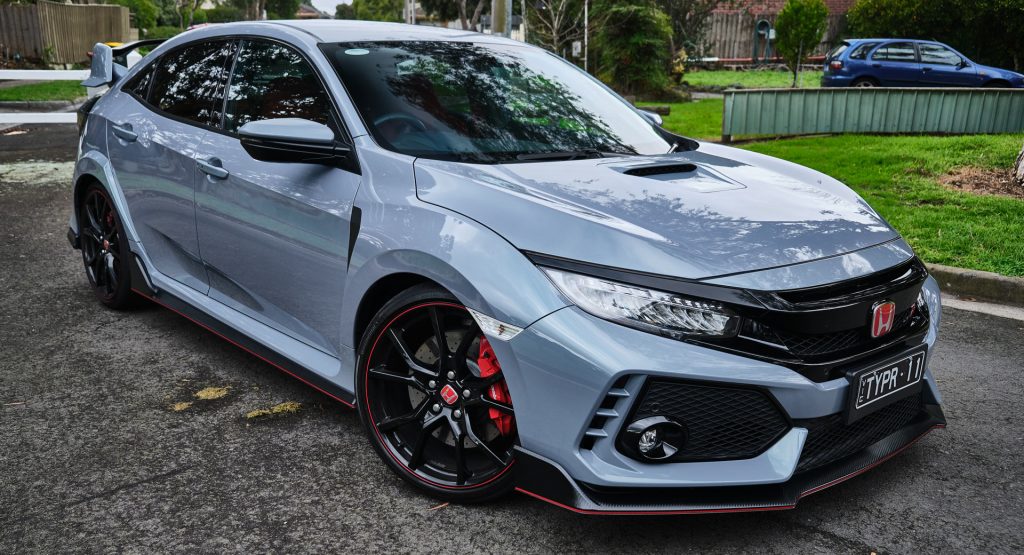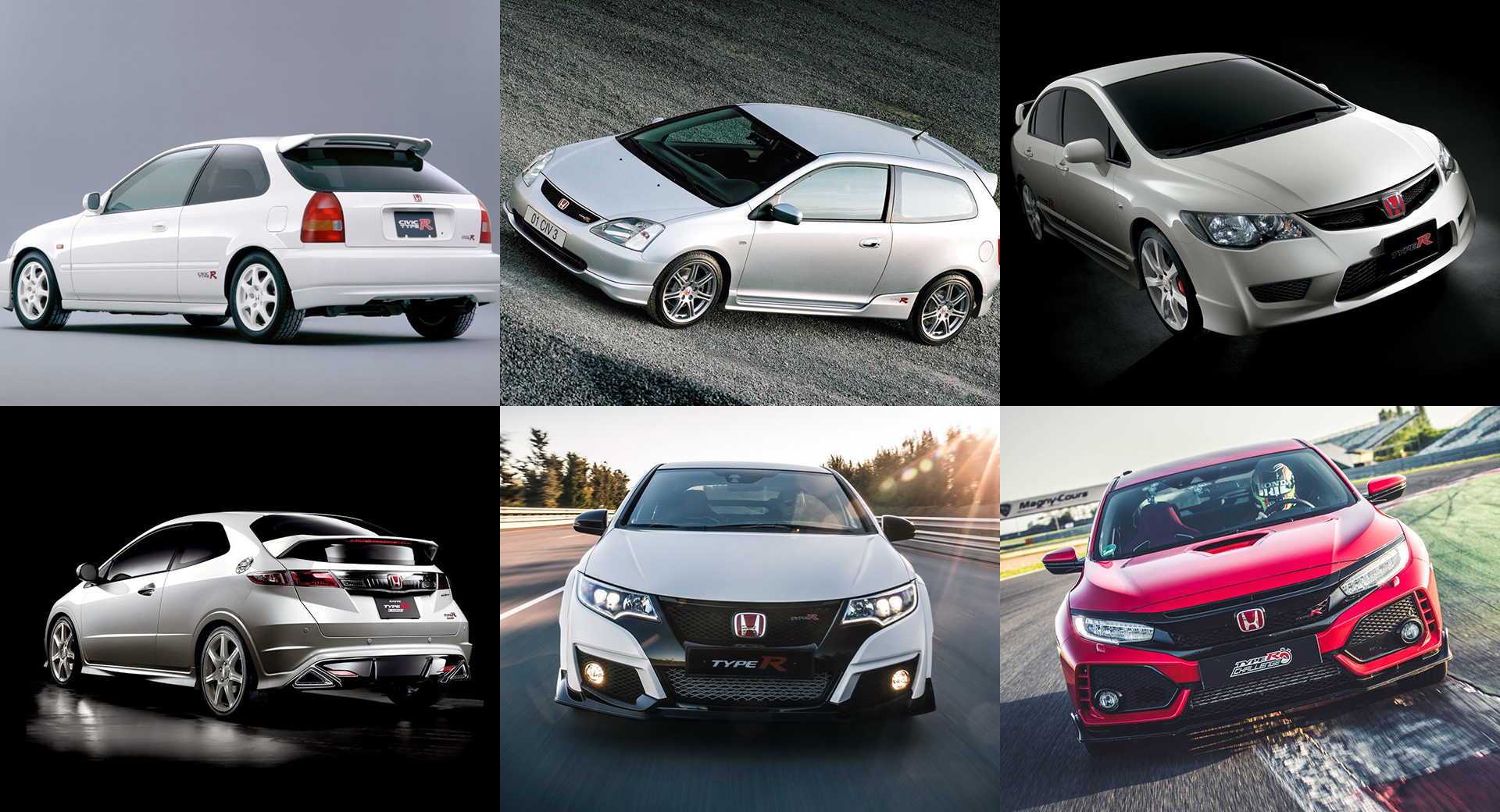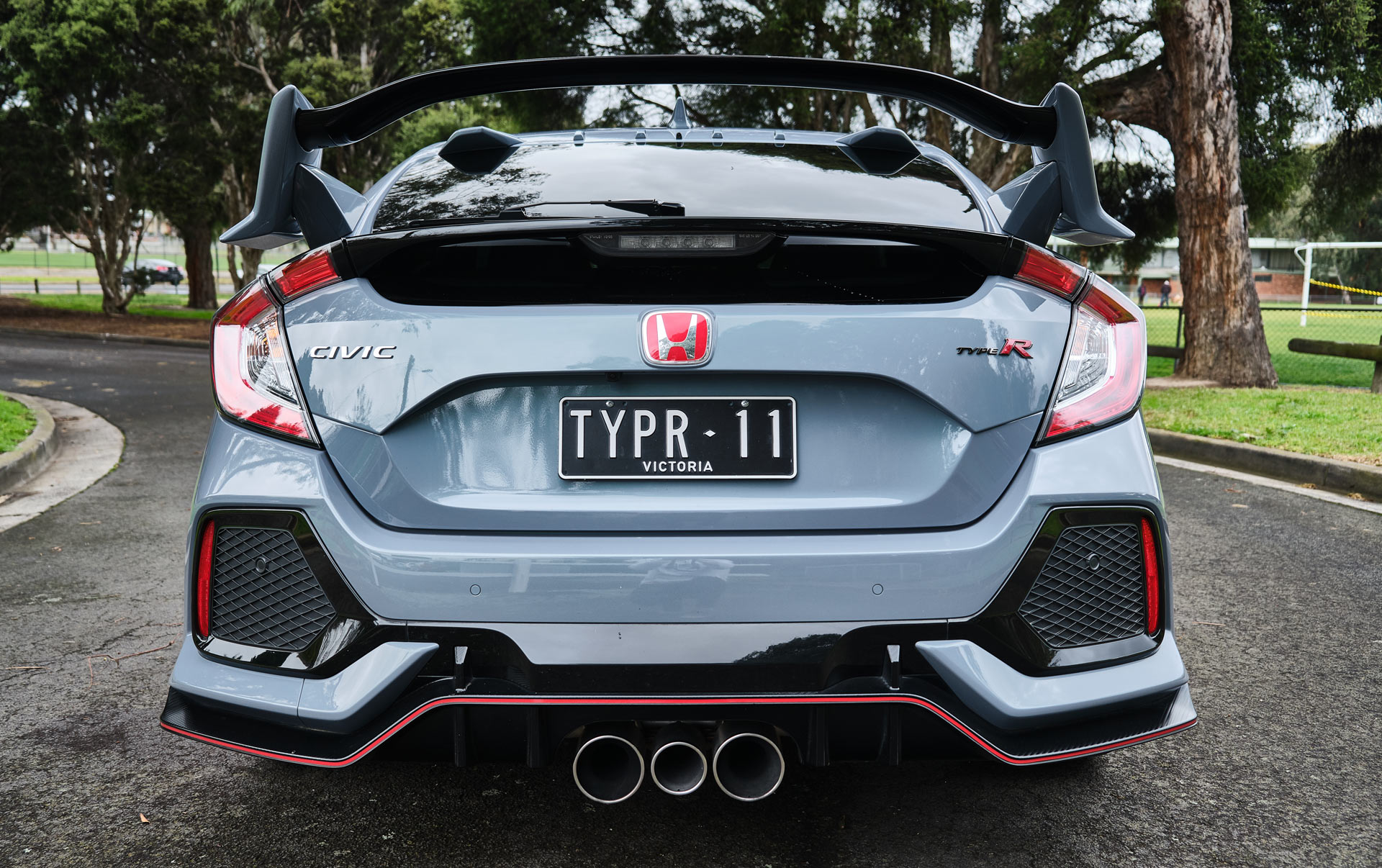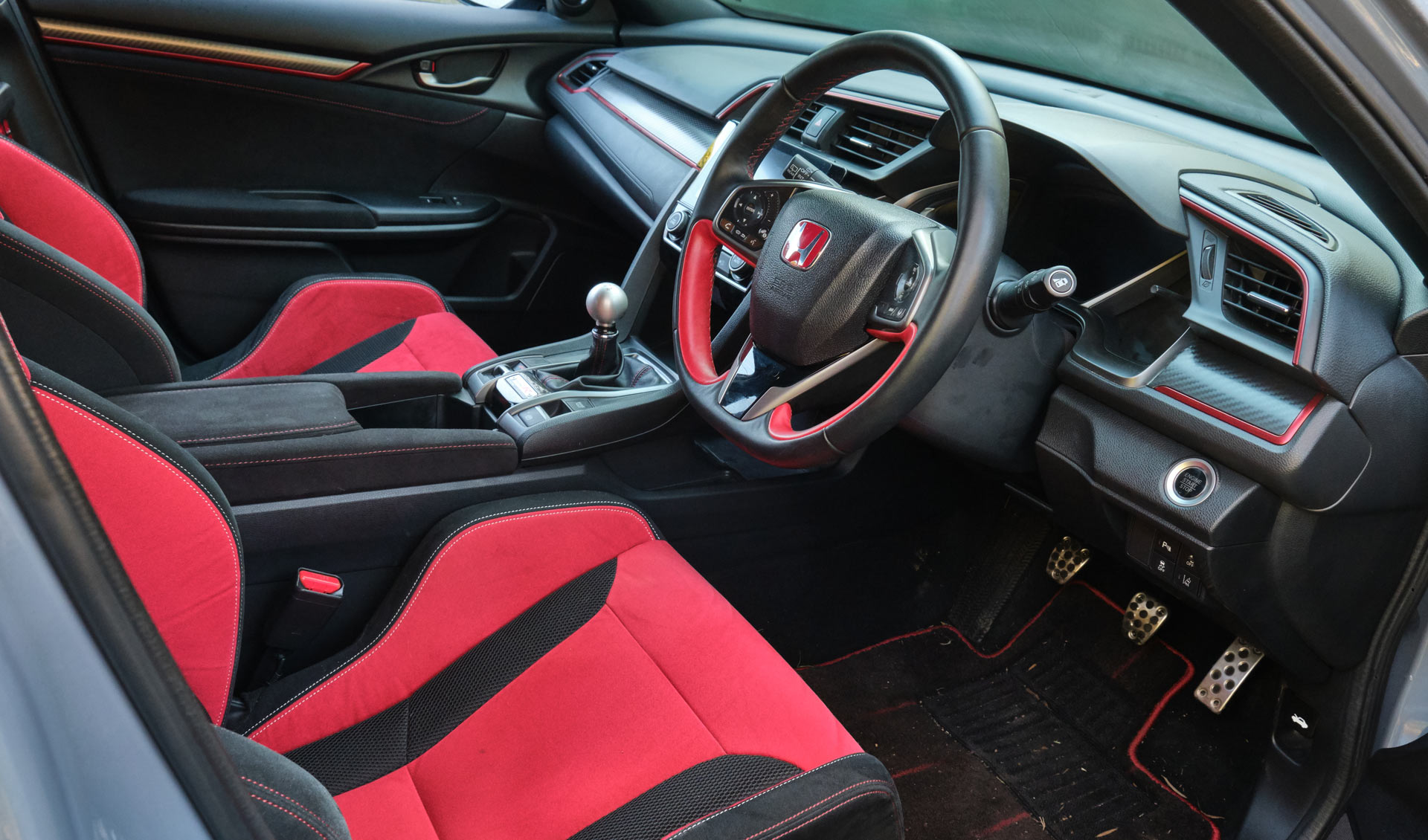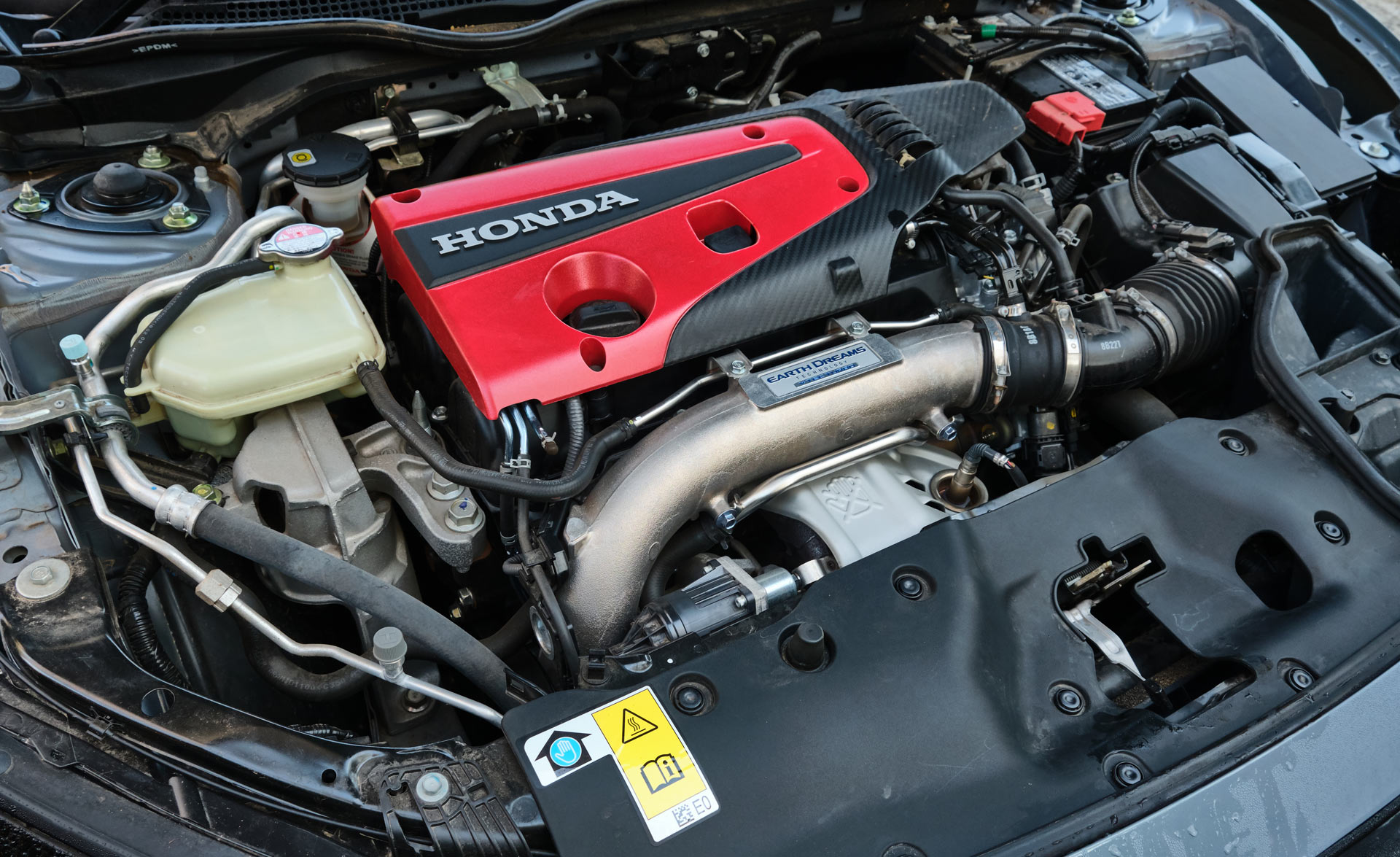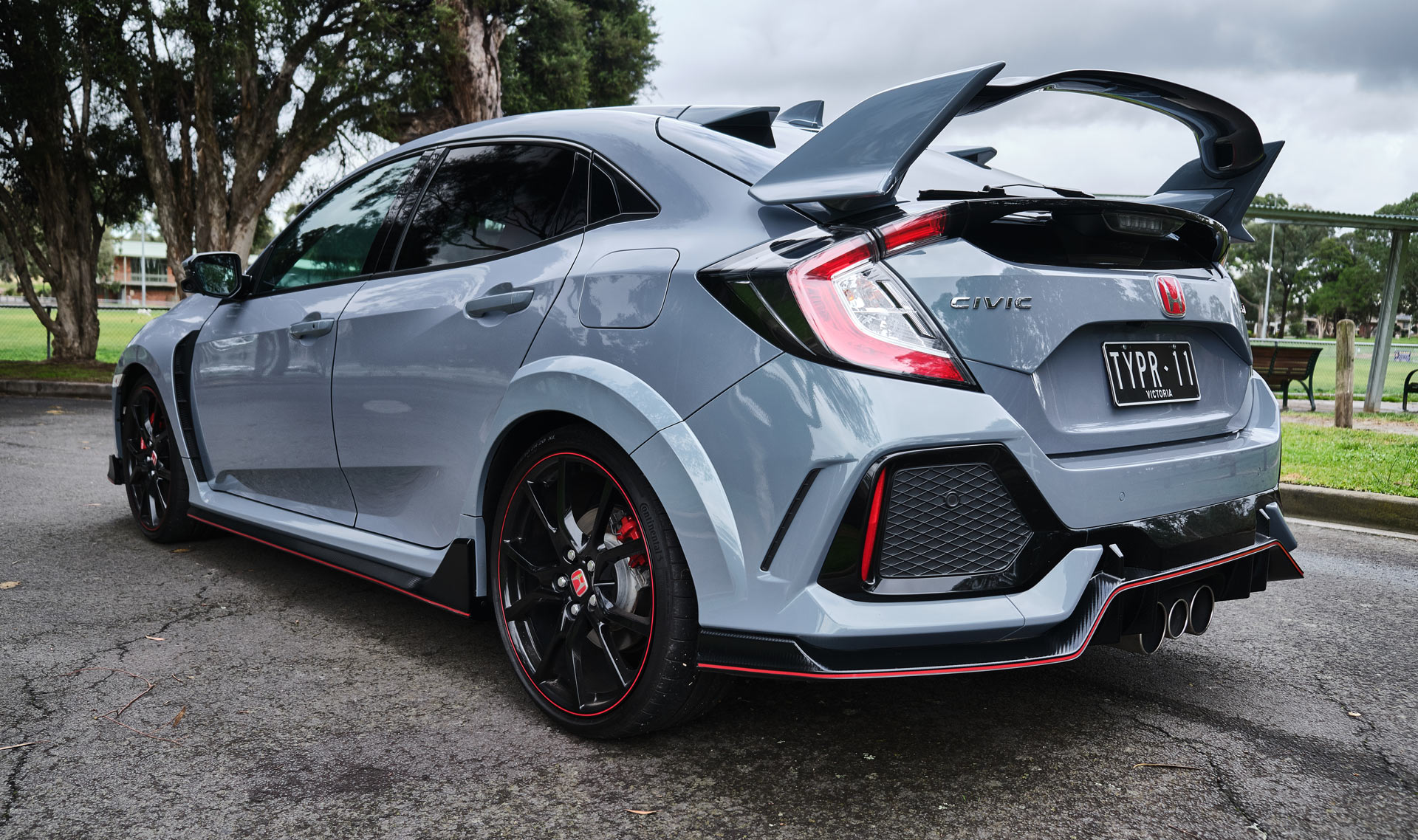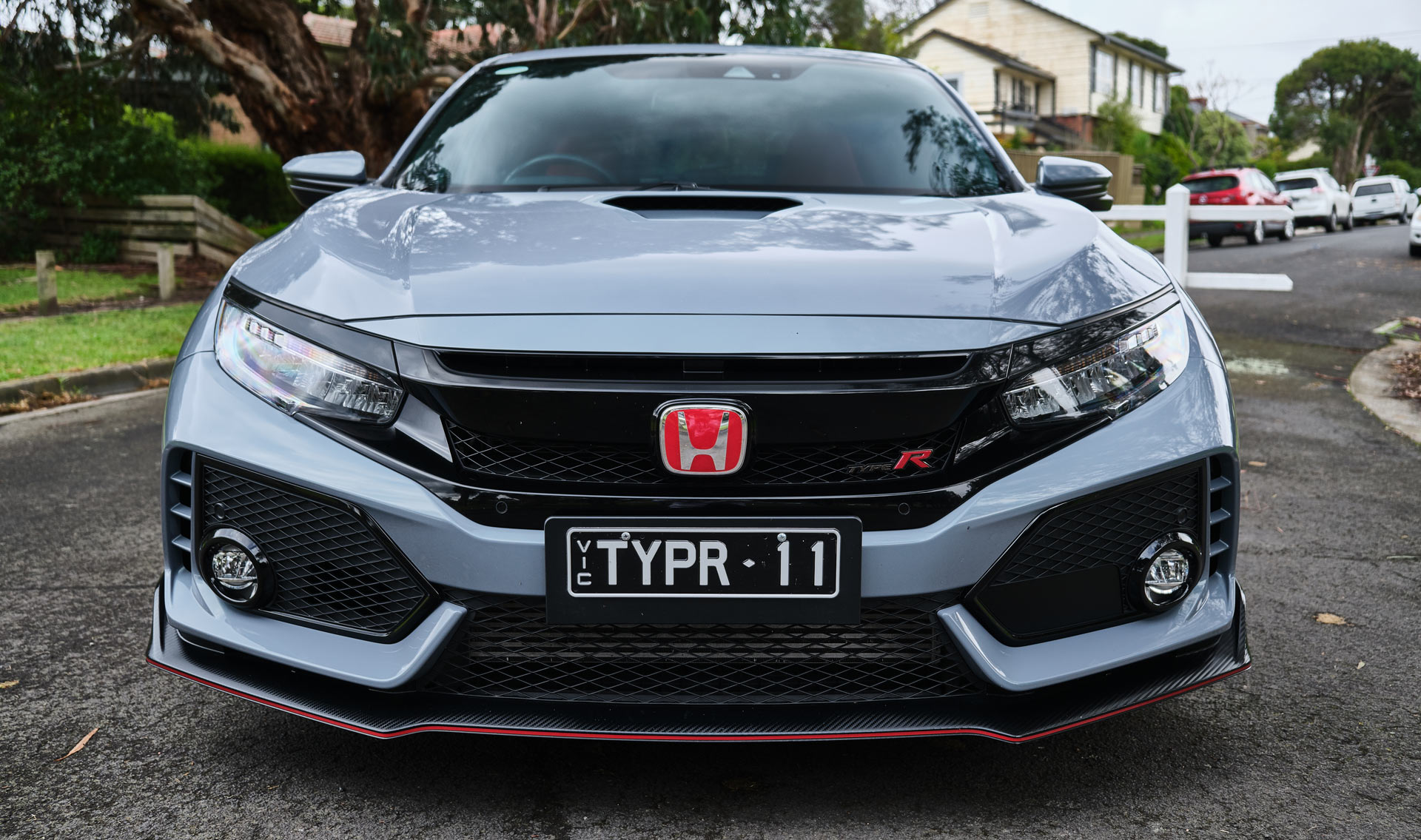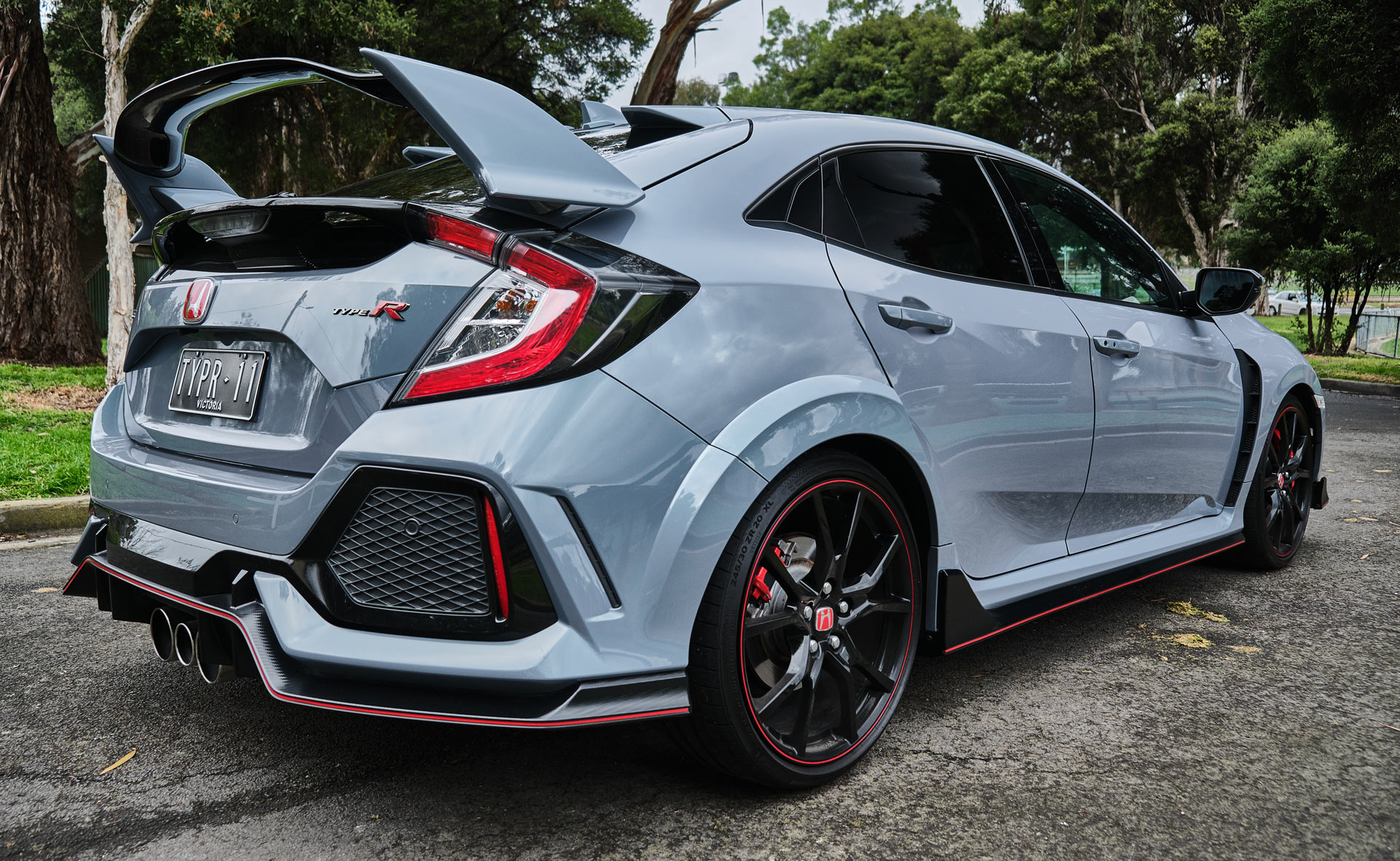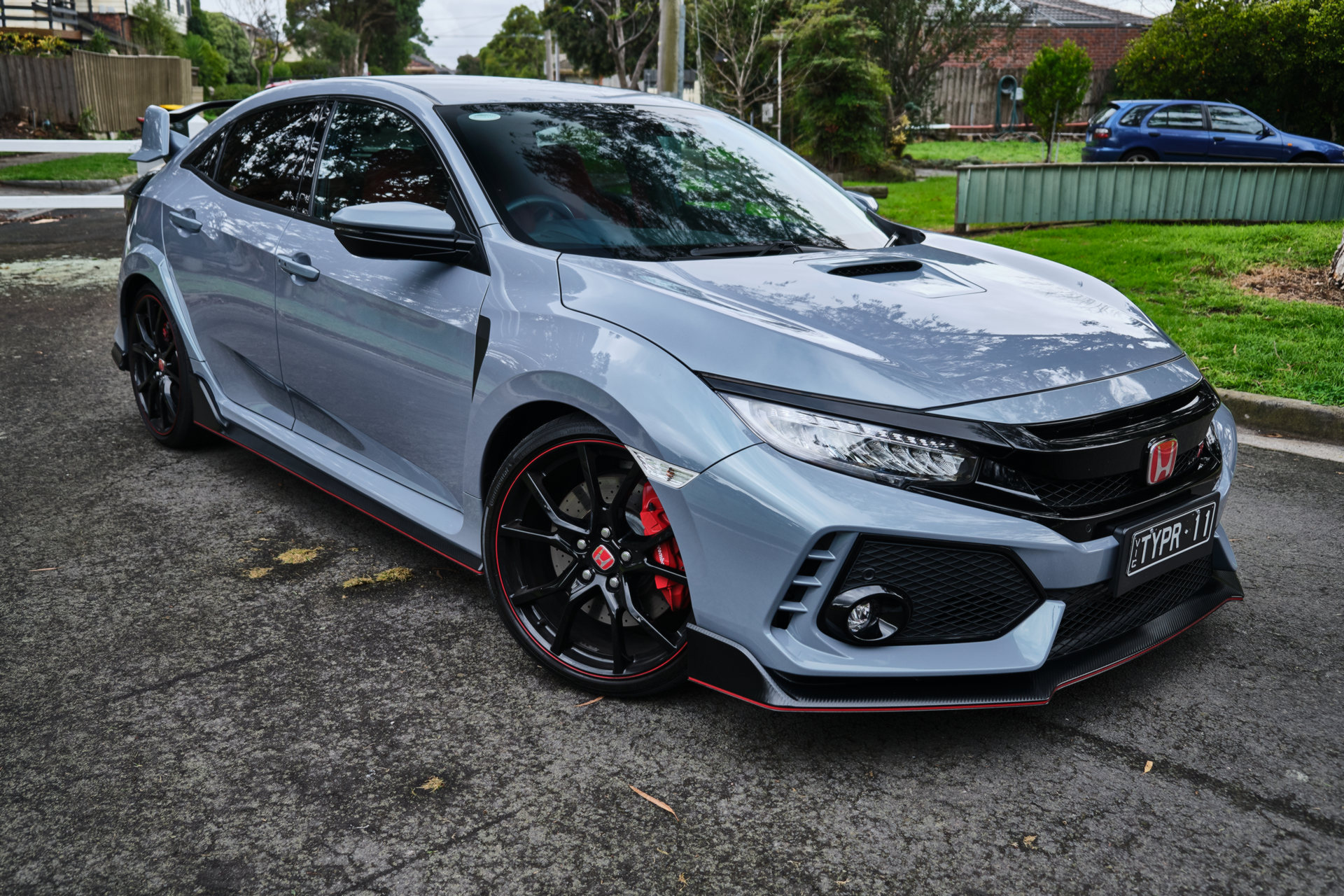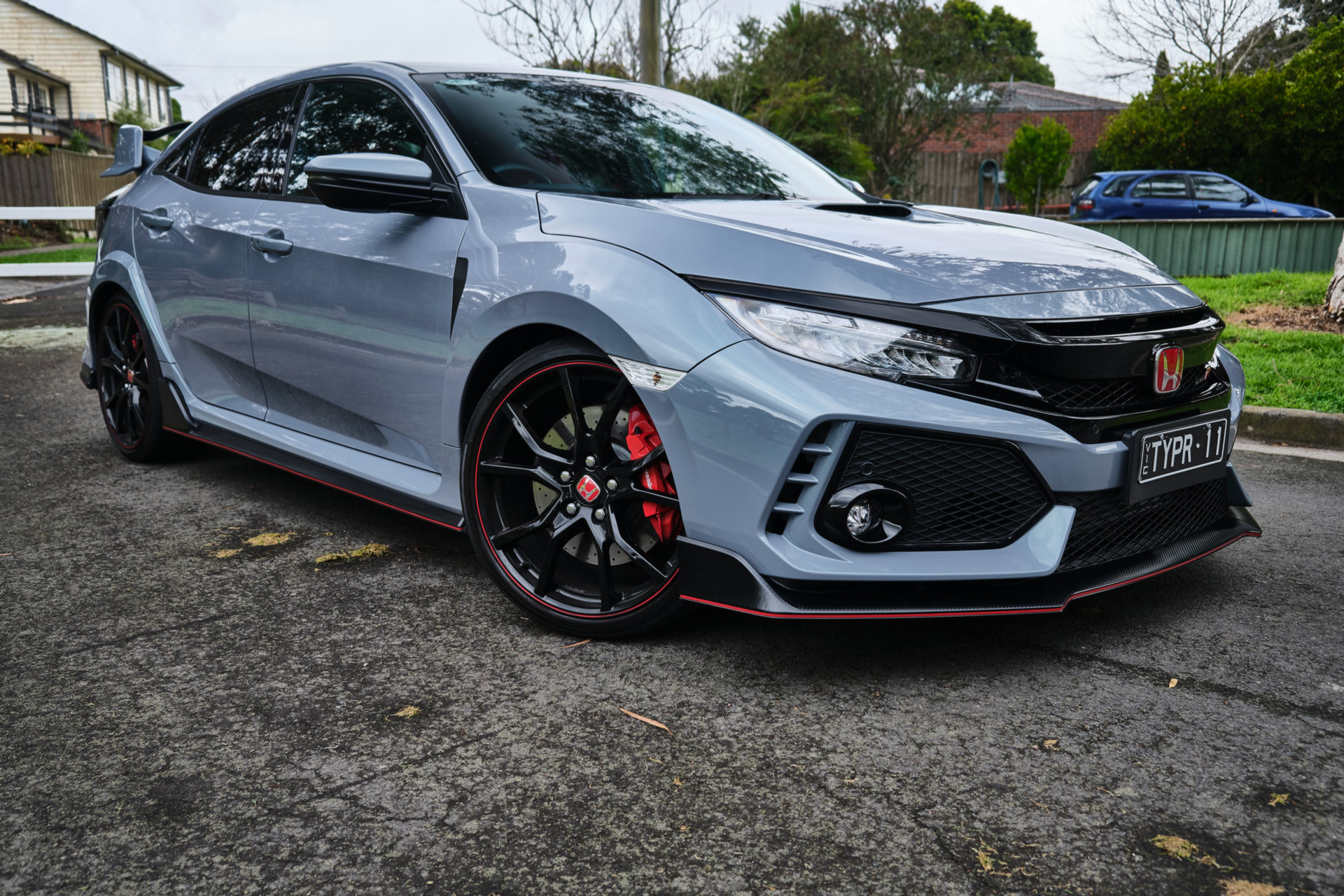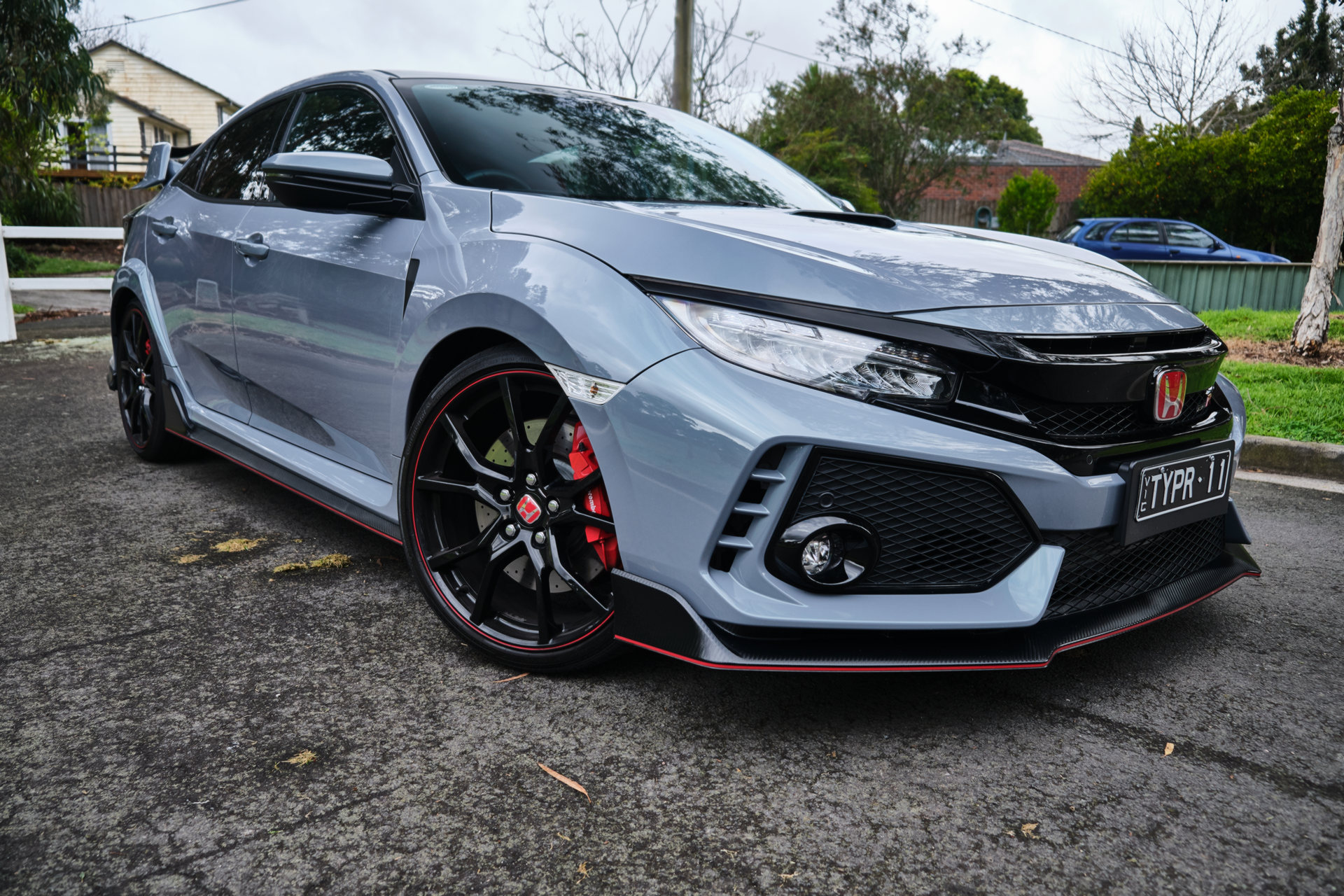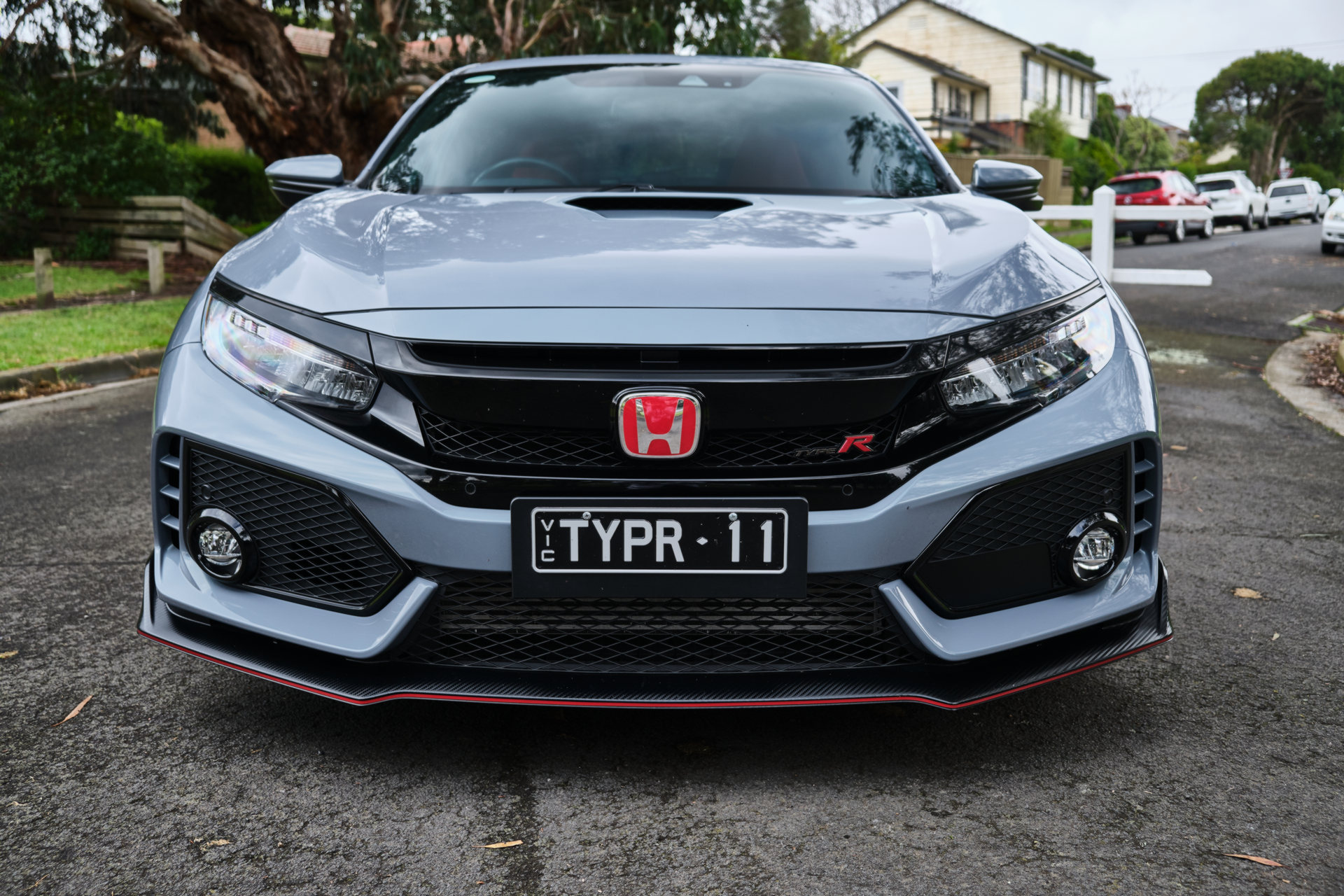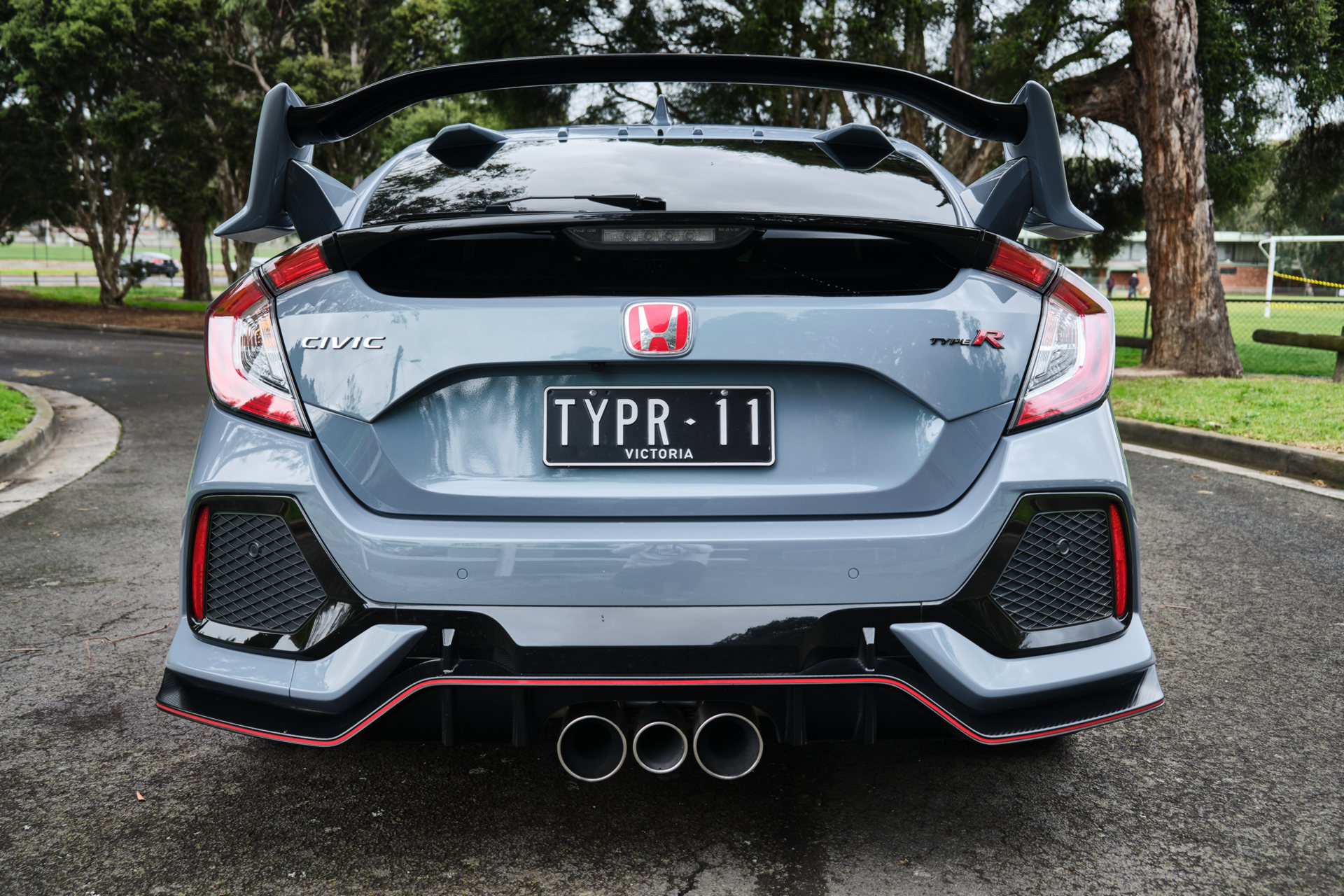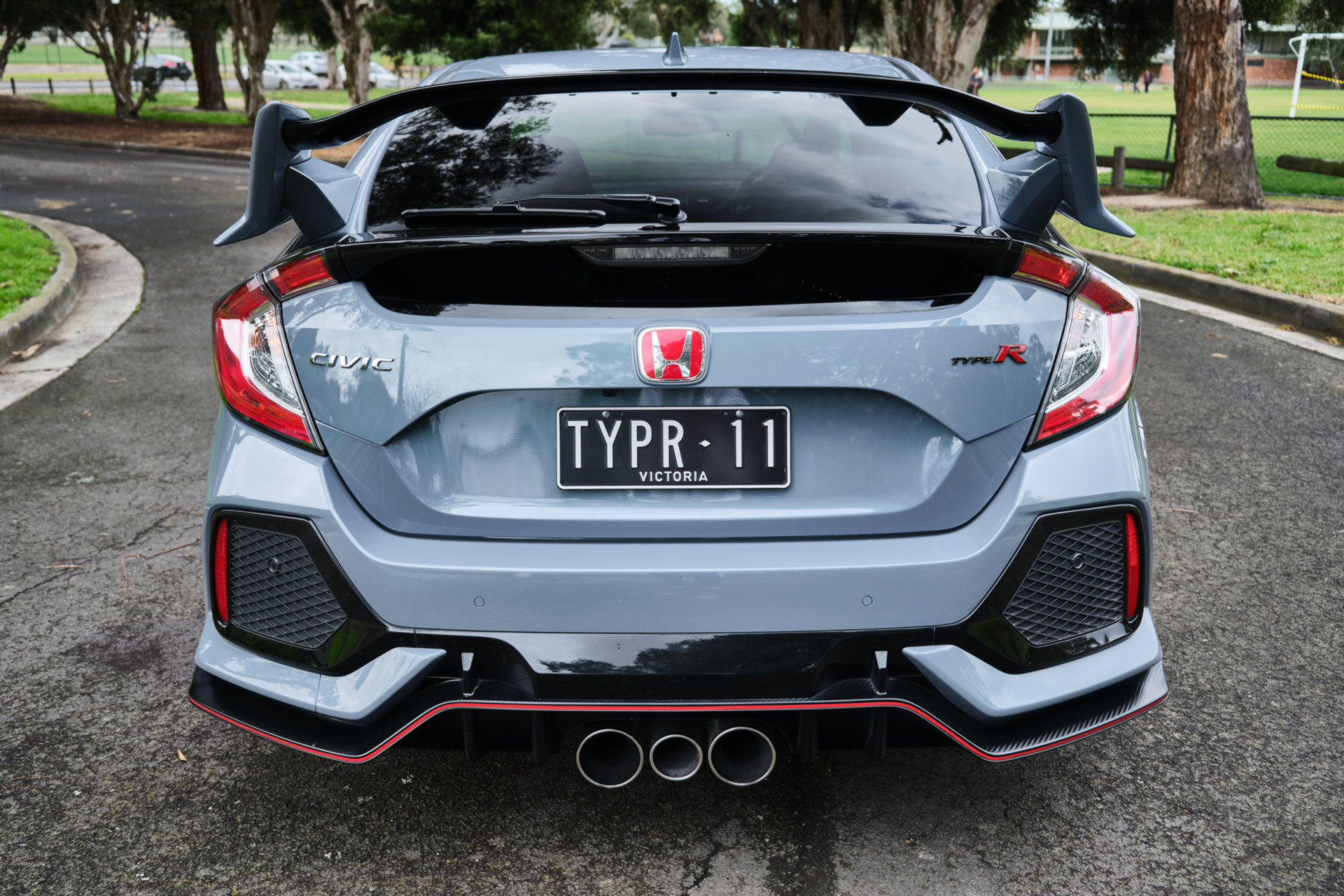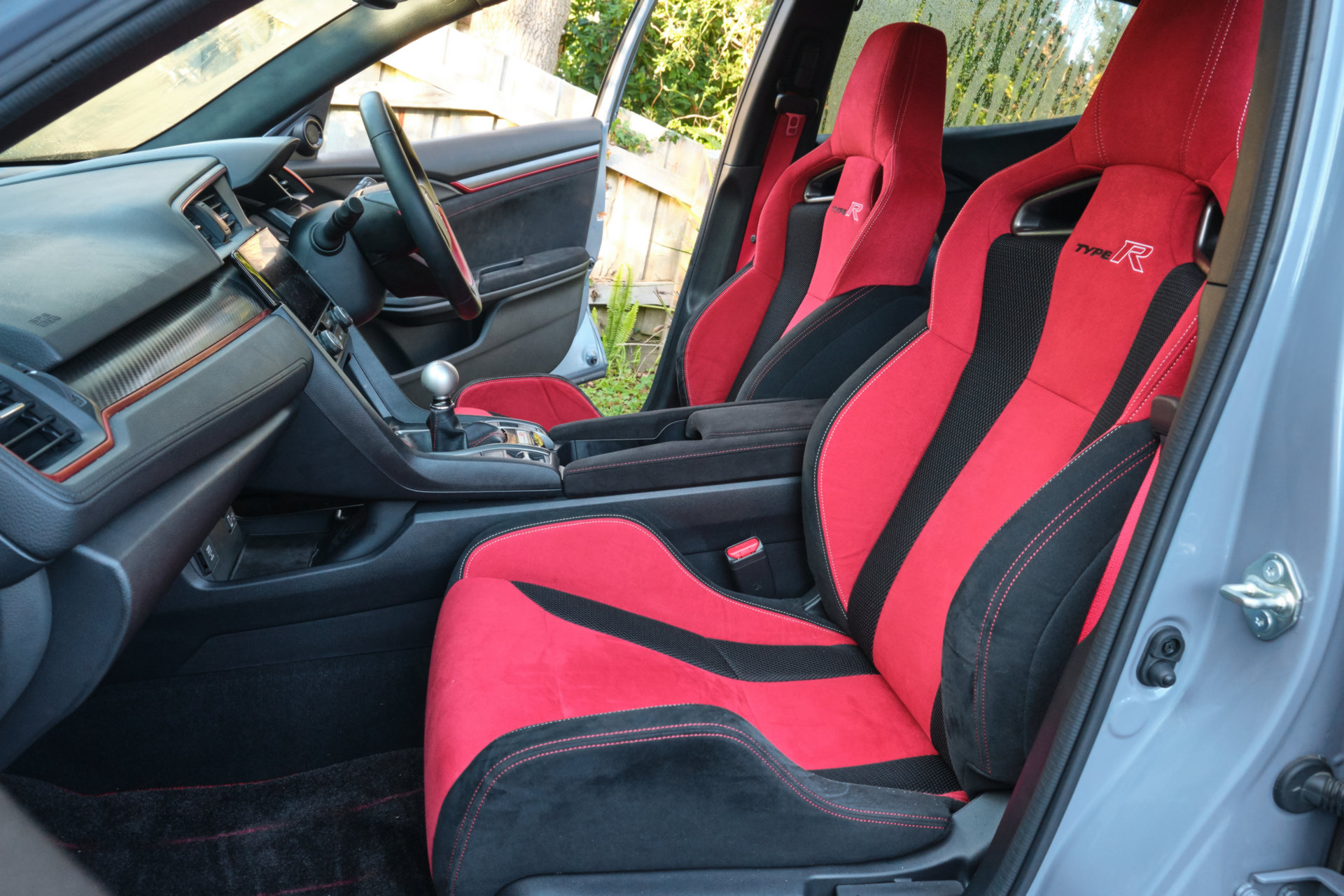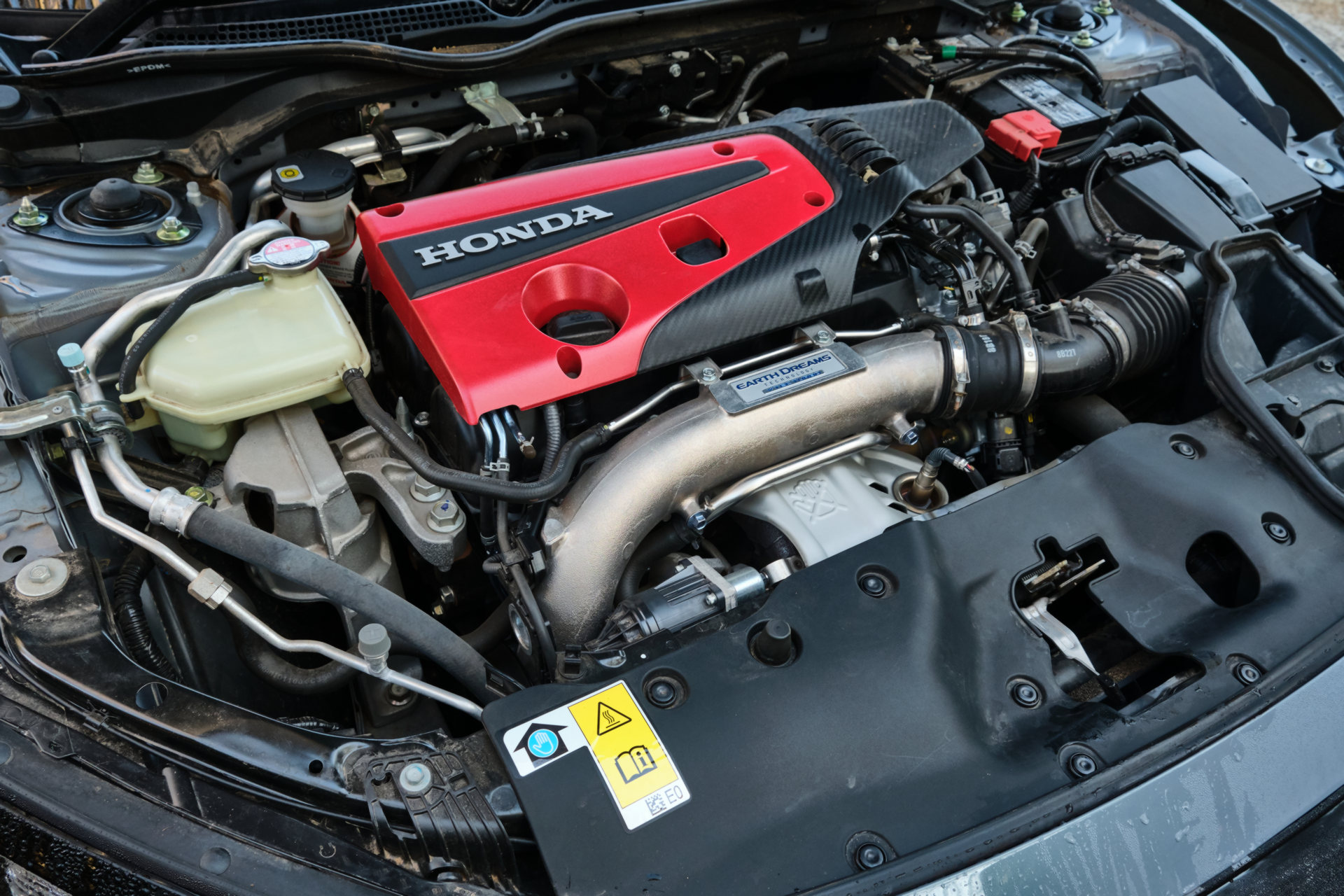The Honda Civic Type R is a legend in the world of hot hatches and has been a staple the segment since the late 1990s.
A brief history
Honda first introduced the ‘Type R’ nameplate on the Civic with the EK-generation launched in 1997. It was an instant success, but it was only the start. In 2001 Honda released its next Civic Type R, this time based around as the 7th generation car and dubbed the EP3. Outfitted with a high-revving, 2.0-liter K20 VTEC engine, many consider it to be the finest Type R model the Japanese marque has ever produced.
In 2006 came the FD2 Civic Type R for the Japanese market and the FN2 Civic Type R for international markets. The FN2 was lackluster and failed to live up to the hype of the EP3 and arrived at a time when Honda had seemingly lost its mojo and was becoming soft. Few were sad when production ceased in 2011.
As the hot hatch segment heated up during the mid-2010s, a new Civic Type R was launched: the FK2. It was unique as, for the first time, it came outfitted with a turbocharged 2.0-liter and, even though it was short-lived, it met (and exceeded) most expectations.
A real head-turner
That brings us to the current day and the fifth-generation, FK8 Civic Type R. Yes, the car has been around for three years now and in the U.S., recently received a facelift for 2020. But when Honda Australia offered us the chance to drive a 2019 model for a week, we simply couldn’t say no.
One look at the FK8 model and it is clear that it means business, regardless of whether or not you like the boy-racer styling. Personally, I’m quite a fan of how the car looks, particularly from the front thanks to the wide stance, faux carbon fiber splitter and aggressive headlights.
The rear end is slightly less appealing, as the shape of the Civic hatchback remains a little odd and slapping a massive rear wing on it makes it even more questionable. Nevertheless, if you want a hot hatch that makes a statement on the road, the Type R is it. No VW Golf GTI, Hyundai i30 N, or Renault Megane R.S. can match it for road presence.
Read Also: 2021 Honda Civic Type R Limited Edition Sets FWD Lap Record At Suzuka
Sliding into the driver’s seat and the car’s driver-focused nature becomes obvious. Honda has installed brilliant bucket seats up front that are both beautifully supportive yet remain compliant and comfortable on long journeys. Taller drivers like myself will also be pleased to know the seats adjust down very low. There is no other hot hatch on the market with a better driving position.
With the exclusion of some fake carbon fiber trim and red accents, the cabin of the Type R is largely the same as lesser Civic variants. That means it has the same steering wheel, albeit wrapped in black and red leather, the same digital instrument cluster and the same 7.0-inch infotainment system. For me, the leather on the steering wheel was too hard (I’m sure the Alcantara wheel of the 2021MY is much better) and the infotainment system is very slow. However, you forget about all that when you start driving.
The first thing you feel when starting up the car is the gearbox. Oh, that lovely six-speed. Honda (as well as Porsche), have long offered the finest manual transmissions on the market and the gearbox of the FK8 Civic Type R is one of the best out there. For starters, there is a metal shift knob with a tactile feel. Next, there’s a remarkably short throw between the gears as well as a great sense of engagement when you make a shift. Combined with a perfectly-weighted clutch pedal, shifting in the Honda is a real joy.
An engine (almost) as great as Honda’s legendary N/A four-cylinders
Honda’s decision to ditch its high-revving naturally-aspirated VTEC engines for a 2.0-liter turbocharged four-cylinder was controversial, to say the least. It pumps out 306 hp (228 kW) and 295 lb-ft (400 Nm) of torque and as impressive as though figures are, they only tell part of the story.
So many small-displacement turbocharged engines on the market run out of puff at 6,000 rpm. Not the Type R’s. In fact, the redline sits at 7,000 rpm and even though peak torque is found between 2,500 rpm and 4,500 rpm, the 2.0-liter loves to be revved and feels just as intoxicating as wringing out a K20 to over 8,000 rpm.
Unlike some of its rivals, Honda hasn’t paired the engine with an exhaust that crackles and pops at every opportunity. Instead, there’s almost no exhaust sound from the driver’s seat and just a nice induction noise from the engine. During my week with the car, I decided to drop the rear seats, curious to see if that would allow me to hear the exhaust note more clearly. It made a huge difference. With the rear seats folded flat, you can hear the unique whooshing sound of the exhaust. It is not a throaty sound and more akin to a fighter jet firing up its engines and getting ready to take off.
Handles like it’s on rails
Much has been written about how the Type R handles on the twisty stuff and it performed just as well as I’d hoped. The sticky 245/30 Continental tires provide excellent front end grip and allow you to breeze through corners at a decent pace with very little fuss. Interestingly, Honda has engineered in quite a bit of lift-off oversteer, which took me by surprise at first, but as I got used to it, only added to the driving experience.
In a straight-line, the car is a weapon. Funneling over 300 hp through the front wheels is usually a recipe for mountains of torque steer and yet, the Civic Type R doesn’t even have a hint of it thanks to the car’s helical limited-slip differential and unique suspension geometry. While there is no torque steer, the front wheels love to lose traction, regardless of whether it is wet or dry. In the wet and without even trying, the wheels can start spinning in third gear. In dry (but cold) conditions, you’ll be fighting traction issues at the top of first and second.
Three driver modes are available; Comfort, Sport, and +R. As the hatch features adaptive dampers, it is plush when driven in Comfort, soaking up any bumps and imperfections in the road. If you want to have a little more fun, you can switch it into Sport, tightening everything up and making it that little more aggressive. And then there’s +R.
When driven in this mode, the Type R feels like a caged tiger just waiting to be unleashed. The suspension firms up, the throttle response is sharpened and the steering gets much heavier. It may be too much for some on the street, but I found it perfect, primarily switching between Comfort and +R and rarely using Sport mode. While the suspension is firm in +R, it retains an inherent suppleness and is not as jarring as the Renault Megane R.S. 300 Trophy I recently drove.
The full package?
For how great the current Honda Civic Type R is, there is one issue that stands out: the lack of a customizable drive mode. Pretty much all serious hot hatches on the market allow drivers to configure systems like the steering, suspension, engine, and exhaust note to their individual tastes. It is odd Honda hasn’t done this and it hasn’t rectified the issue with the 2021 model. Ideally, I’d want to drive the Type R with the engine in +R mode, the suspension in Comfort, and the steering in Sport.
In Australia, prices for the Honda Civic Type R start at AU$51,148 (US$36,329) including on-road costs, although that figure may increase slightly for the 2021 model. That makes it roughly AU$3,000 (US$2,130) more expensive than the Megane R.S. 300 Trophy and about AU$13,000 (US$9,233) pricier than a Hyundai i30 N.
Jarring looks aside, this is a serious bit of kit that requires an experienced driver to get everything out of it on the road. It is razor-focused and the track-oriented nature of the car is apparent from the moment you step inside. Despite this, the Type R is more easy to live with than its rivals.
How does it compares to the competition?
I’ve had quite a lot of wheel time behind the Hyundai i30 N, Renault Megane R.S. 300 Trophy and Honda Civic Type R over the past few months. All three have their own unique personalities. At one end of the spectrum sits the i30 N, a car that feels like it’s been designed solely for fun and putting a smile on the face of the driver. At the other end of the spectrum is the Civic Type R, a ferocious performer with a serious demeanor and outstanding abilities. Sitting somewhere in the middle of the Hyundai and Honda is the Renault, a car that is one part fun-factory and one part track-tuned monster. All three are great and should be considered for anyone looking for a potent hot hatch.







